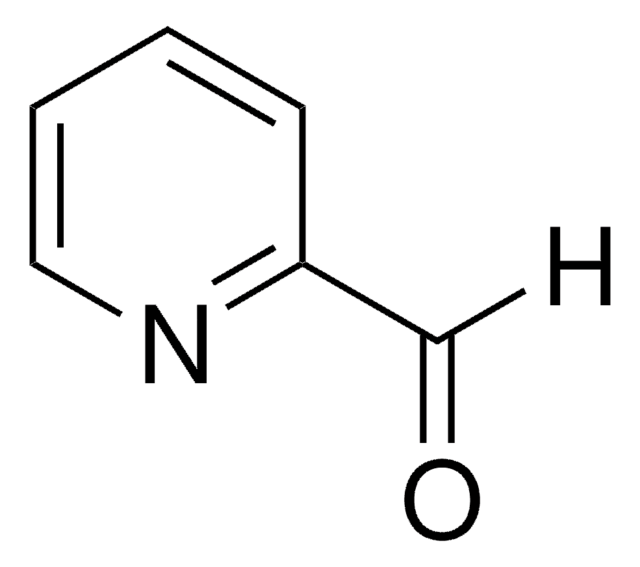637017
Bismuth(III) oxide
nanopowder, 90-210 nm particle size, 99.8% trace metals basis
Synonyme(s) :
Dibismuth trioxide
About This Item
Produits recommandés
Description
beta
Niveau de qualité
Pureté
99.8% trace metals basis
Forme
nanopowder
spherical
Pertinence de la réaction
reagent type: catalyst
core: bismuth
Superficie
3.2-3.5 m2/g
Taille des particules
90-210 nm
Masse volumique apparente
0.5‑1.1 g/mL
Chaîne SMILES
O=[Bi]O[Bi]=O
InChI
1S/2Bi.3O
Clé InChI
WMWLMWRWZQELOS-UHFFFAOYSA-N
Vous recherchez des produits similaires ? Visite Guide de comparaison des produits
Application
- Characterization and Physical Properties of Nano-sized Bi2O3/Polymer: This research investigates the properties of bismuth(III) oxide nanoparticles within a polymer matrix, emphasizing energy and high-refractive index applications. It explores the potential of Bi2O3 in enhancing the performance of composite materials (A Alruwaili, AM El Sayed, 2024).
- Electroanalytical Performance Enhancement by Bismuth (III) Oxide: A study on incorporating bismuth(III) oxide nanoparticles into carbon ceramic electrodes to improve their electroanalytical capabilities, particularly for detecting pollutants in water (M Brycht et al., 2024).
- Visible Light Responsive Photocatalysts for Arsenic Remediation: This review highlights the role of bismuth-based photocatalysts, including bismuth(III) oxide, in the effective remediation of arsenic from water sources, underlining the photocatalytic capabilities of these materials (I Natali Sora et al., 2024).
- High-Performance Composites for Gamma-Ray Shielding: An investigation into fluoroelastomer composites filled with bismuth(III) oxide for their application in gamma-ray shielding, highlighting the material′s effectiveness in blocking radiation (SM Magnere et al., 2024).
Caractéristiques et avantages
Code de la classe de stockage
11 - Combustible Solids
Classe de danger pour l'eau (WGK)
nwg
Équipement de protection individuelle
dust mask type N95 (US), Eyeshields, Gloves
Faites votre choix parmi les versions les plus récentes :
Déjà en possession de ce produit ?
Retrouvez la documentation relative aux produits que vous avez récemment achetés dans la Bibliothèque de documents.
Les clients ont également consulté
Articles
Innovation in dental restorative materials is driven by the need for biocompatible and natural-appearing restoration alternatives. Conventional dental materials like amalgam and composite resins have inherent disadvantages.
Notre équipe de scientifiques dispose d'une expérience dans tous les secteurs de la recherche, notamment en sciences de la vie, science des matériaux, synthèse chimique, chromatographie, analyse et dans de nombreux autres domaines..
Contacter notre Service technique












